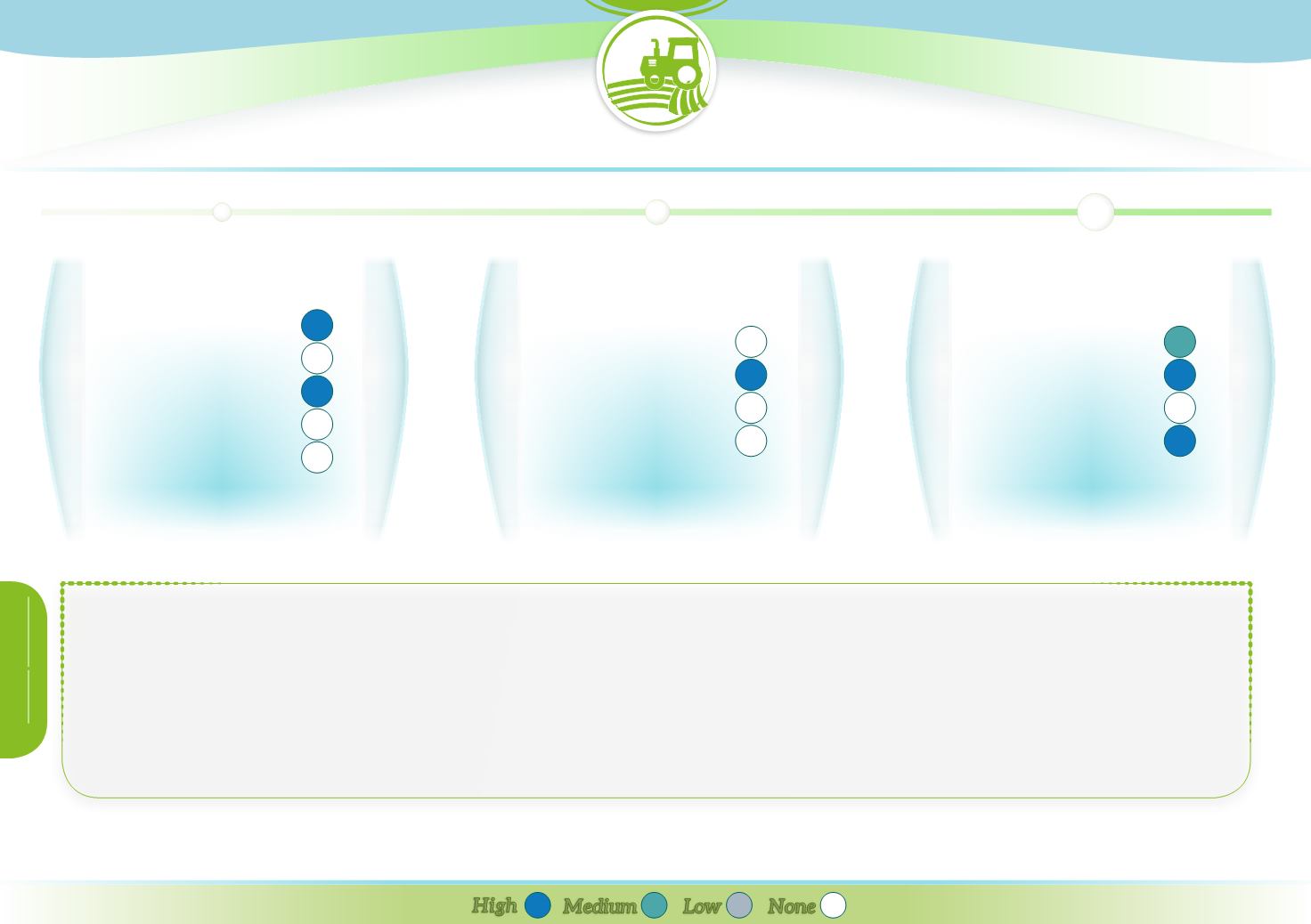
E
cosystem
servicesdelivered
Provisioning
Regulation & maintenance
Cultural
Abiotic
C
ontribution
topolicyobjectives
Water Framework Directive
Floods Directive
Birds & Habitats Directive
2020 Biodiversity Strategy
P
otential
biophysicaleffects
Runoff
Reducing pollution
Soil conservation
Habitat
Climate Change
High
Low
Medium
None
Densely vegetated strips increase surface roughness and hydraulic resistance to flow; that reduces the transport capacity of the runoff and slows it down, along with the greater
efficiency of closely sown plants in absorbing water. Across slopes, strip cropping helps to intercept water runoff compared to up-down slope cropping, thus contributes to reducing
flood risks
particularly when used in a planned conservation system including a combination of measures. It also highly reduces the
rate of sediments
moving down the
slopes, contributing to soil erosion control. Moreover, crop rotation among the strips enables clear-tilled crops to benefit from the sediment deposited in the previous year. Greater
infiltration contributes to groundwater recharge.
Strip cropping has a beneficial impact on the
filtration of pollutants
, since strips plants absorb and assimilate nutrients efficiently. By reducing sediment loss and filtering
pollutants, it enables to improve and maintain
water status of hydro-morphology quality
elements and provide better protection for ecosystems. Strip cropping is also
efficient in increasing biodiversity into agro-systems (by providing habitats, which can increase species richness) and sustainability of agriculture.


